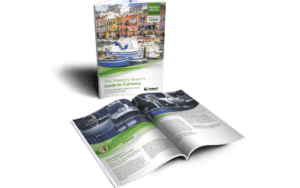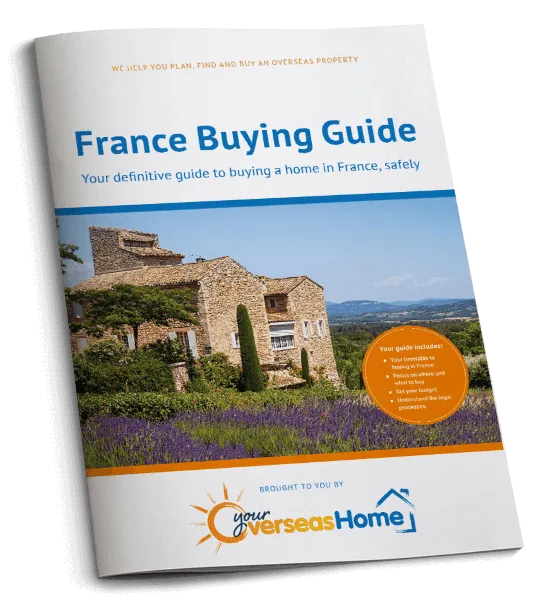Some French Christmas traditions closely resemble those of the UK but others may be surprisingly different. France, lest we forget, is a country that refuses to be held captive to commercialism. It’s for that reason that Christmas in France is genuinely more about giving thanks for the year that has passed and wishing great things for the year to come.
It is also a very important time to be with your nearest and dearest. Simply catching up and making memories. And perhaps a more religious time than in some countries of this modern age. Here we take a magical walk through the most wonderful time of the year and some of the best French Christmas traditions. All starting with the run-up to it.
Download your France Buying Guide
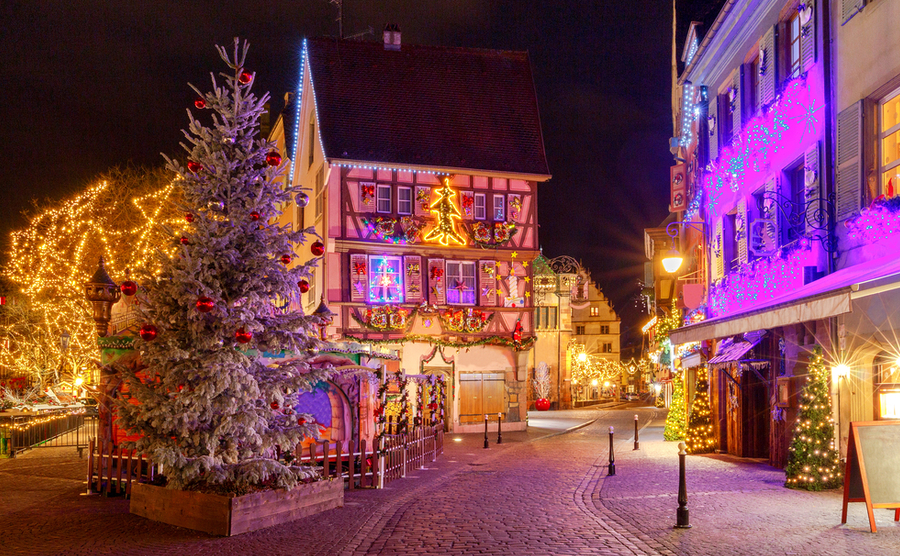
The charming city of Colmar on Christmas Eve
Advent
The preamble to the main event is Advent. Children share in the worldwide tradition of opening doors on their advent calendars to discover daily surprises. Wreaths (couronne de l’Avent) made of fir and pine tree branches, adorned with red bows and featuring four candles, are a long-standing tradition. A candle is lit on each proceeding Sunday leading up to the 25th.
Children write and post their letters to Père Noel, guaranteeing themselves a reply. It doesn’t matter where it is addressed, as long as to Père Noel and includes a return address. This is one of the sweetest French Christmas traditions. It all started when an entrepreneurial postal worker replied to children and continued by postal workers to this day. Trees are put up in homes across France according to purist French Christmas traditions and should be real trees. This is based on secular tradition, with the tree symbolising hope and eternal life.
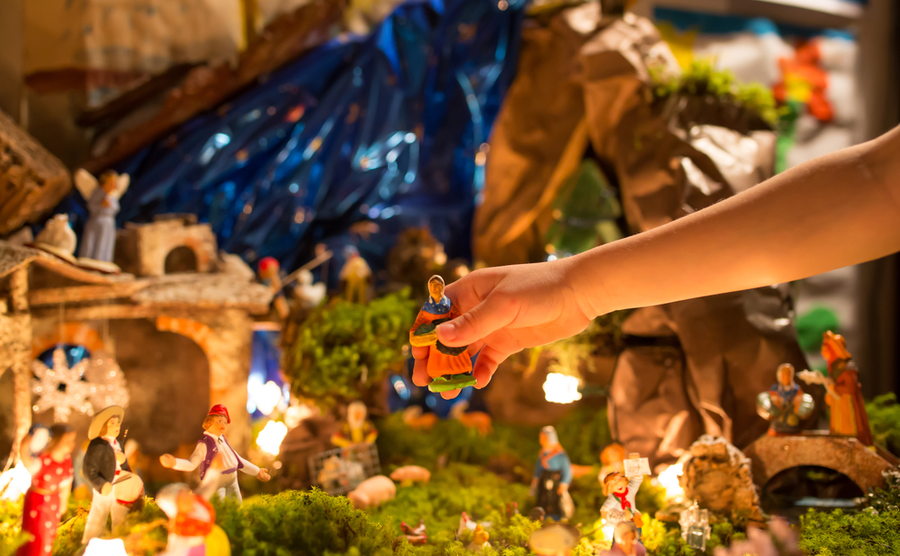
Provencal Christmas nativity scene
The Nativity
An even more important feature of decoration within French homes, and one of the most longstanding French Christmas traditions, is the nativity. This gained popularity during the French Revolution when street nativities were banned. As a result, people simply created them instead of within their own homes. They are often very intricate, taking up huge areas of space. Showcasing many characters, normally given to people throughout their lives, even handed down through families.
They can in fact, rather than simply housing the traditional characters of Mary, Joseph and the three wise men alongside various farmyard animals, be the backdrop to all of the characters of the local village. Which could include the butcher, the baker and even the candlestick maker! As a religious country that prides itself on its faith, the popularity of the nativity is perhaps unsurprising.
Christmas colours
You can decorate homes as well as outside with whatever colours you deem fit, French Christmas traditions dictate that gold, red and green dominate. Gold symbolises the sun and the hope of its imminent return, red is for vibrancy and warmth, as well as the symbolic colour of Pére Noel. Finally green, symbolises evergreen, with the hope that spring’s return is just around the corner. You do however see multi-coloured displays in gardens, particularly where children reside, and everyone of course reserves the right to their taste.
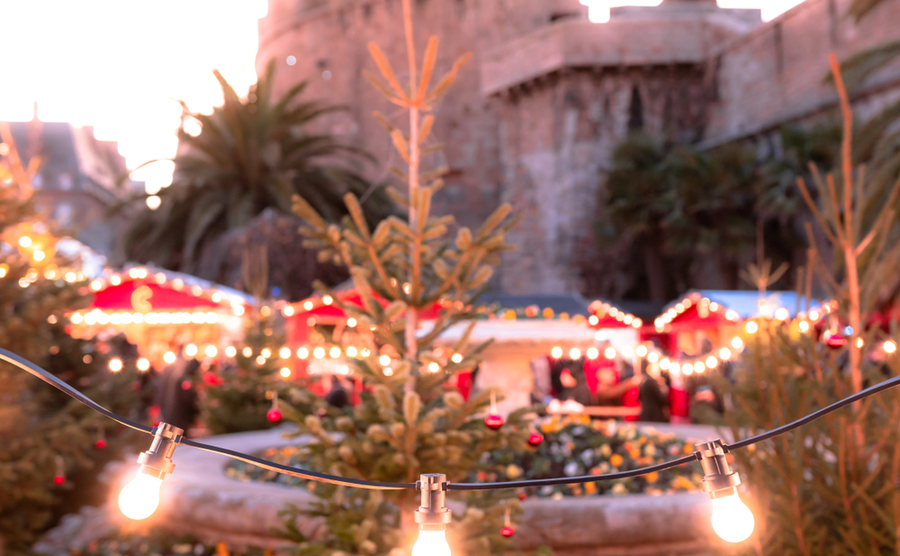
Christmas market in Saint Malo, Brittany
Markets
Another constant of French Christmas traditions is the Christmas market! France prides itself on its all-year-round markets but at Christmas, they truly up the ante. Originally Christmas markets were only held in the North East of France but are now strongest in Alsace, Lorraine and Nord-Pas-de-Calais. With artisanal offerings presented proudly in little wooden chalets adorned with lights and decorations. France is famous for several huge Christmas markets which you could spend days discovering. Most notably in Alsace, Paris and Lille. However, every single commune or village in France worth its salt has one. It’s a chance to show off the artisanal talents of the locals and catch up with friends and family.
Mistletoe and holly
Strangely in France, the significance of Mistletoe is slightly different to that of the UK. While hanging it around the home is one of the French Christmas traditions, it is not for kissing beneath. Rather for bringing luck into the household. And with it being prevalent in rural France, building up in trees rather like bird nests, you need to do little more than forage for it while taking a stroll. Holly is seen in France as sacred, dating back to the druids, and is hung in homes to also bring good luck, as well as protection through the winter months.
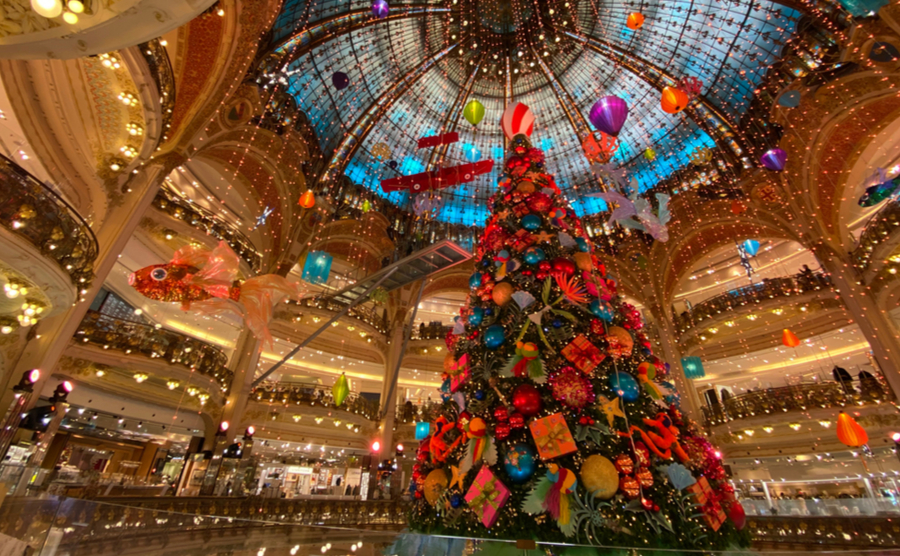
Christmas tree in Galleries Lafayette. Paris
Papillottes
These are either chocolates or candied fruits sold in their millions in the run-up to Christmas in France. Created in Lyon at the end of the 18th century, these delicious treats are wrapped in gold paper with fringing at the ends containing little notes within them. Legend says they were created by a confectioner clerk looking to charm his sweetheart, sending her notes as well as a surprise treat. One of the most consumed French Christmas traditions, they also are a must for the Christmas table during the big Réveillon meal on the 24th of December and of course worthy of a nibble or two prior.
Père Noel
Everyone knows that Père Noel aka Papa Noel is Father Christmas in France. But did you know about Le Père Fouettard (Father spanker) who decides if children have been good or bad? If good, he passes them onto Saint Nicolas and if not he spanks them! Good children win the right to not hang stockings around the fireplace as may be traditional in other countries, but to leave their shoes in front of the fireplace to receive their presents and goodies.
They may also leave carrots and nuts in them for Père Noels’ donkey. Reindeers are more an idea from the States, although this may be taking over here gradually too! One of the most famous French Christmas songs sung by children contains the endearing end line imploring Father Christmas not to forget the little shoe!
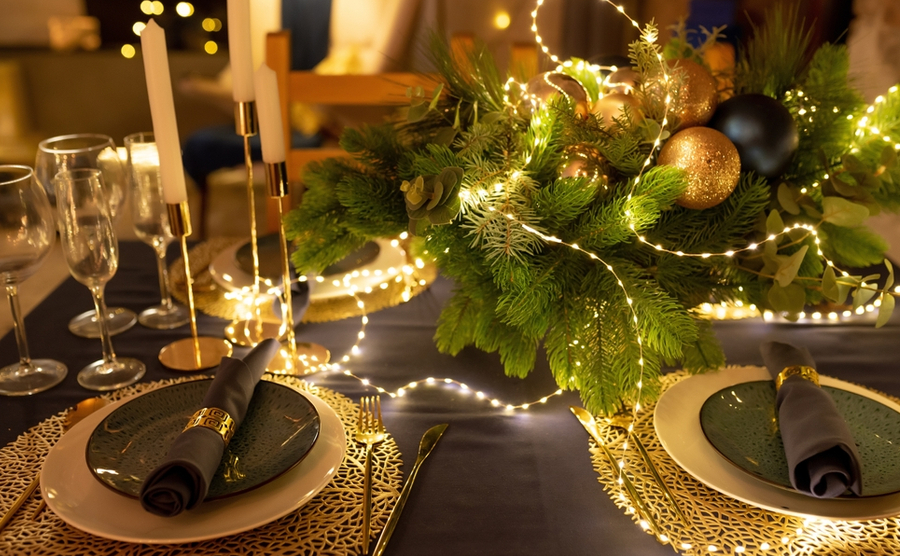
Beautiful table setting with Christmas decorations. Garland on the table
Réveillon
Then we have the real climax of the festive season. Perhaps the most important of French Christmas Traditions is Réveillon. But be warned, the meal on New Year’s Eve is named the same thing, often leading to confusion for new arrivals to France. Designed to be enjoyed, sometimes for up to six hours with friends and family this is the most significant of meals in French households. An occasion to enjoy the finest of fares. Luxurious and rich foods of all kinds including oysters, foie gras, truffles, and the finest meats all accompanied by different courses of drinks. From aperitifs, to wine, to champagne then finally digestifs. Then, you need to ensure that you have enough space still to fit in the traditional Bûche de Noël (Christmas log) to boot!!
Mass
One of the biggest French Christmas traditions is midnight mass. This also heralds the arrival of the baby Jesus into every nativity scene throughout the country. At churches, he arrives to welcome people to midnight mass. Mass is often attended after the big evening Réveillon meal. Families partake together in prayer and song, all giving thanks. Each region of France has its songs and carols, with the oldest French Carol still sung being “Entre le bœuf et l’âne gris” written in the 16th Century. Some carols would even be instantly recognisable to ex-pats, for example, “Il est né le divin Enfant”.
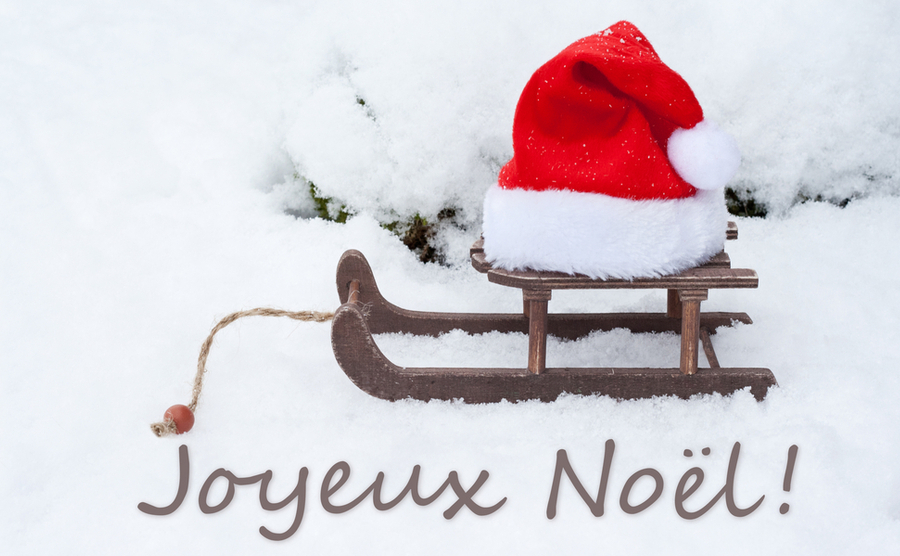
Joyeux Noel, or Happy Christmas
Seasons greetings
As is tradition in most countries to exchange best wishes at Christmas, in France it is more usual to exchange these in the form of notes or cards at New Year. “Meilleurs voeux” is the most standard of French Christmas traditions, and on New Year’s Day you should wish everyone this verbally in passing, should you know them or not. Even the French President makes an address of his people at 8 pm on 31st December in an address known as “les vœux présidentiels”. Wishing the best for every one of us for the year ahead!
Relax
Then, following the big day itself, rest assured you can relax on Boxing Day, as no such day exists in France. After Christmas Day, the celebrations are all over until January 6th. This day celebrates the arrival of the three kings to visit the baby Jesus. Once again the festivities start, as does the eating. A special tart marks the occasion called a Galette de Rois. Hidden inside which is a small porcelain figure, that gives the title of King or Queen for the day to the lucky receiver of it!
You might also like:


